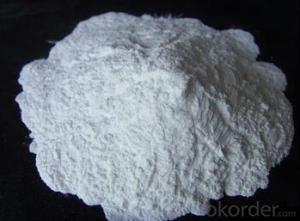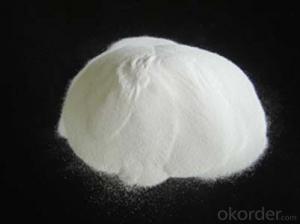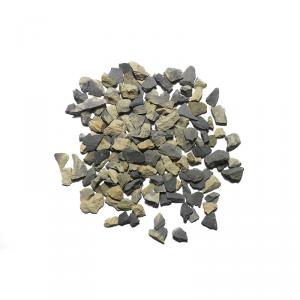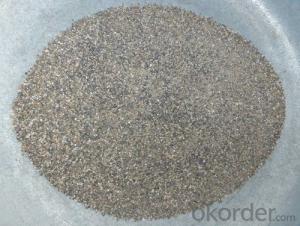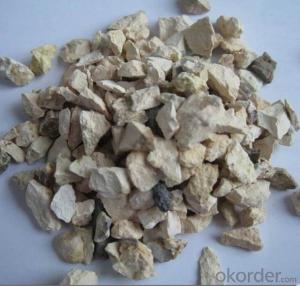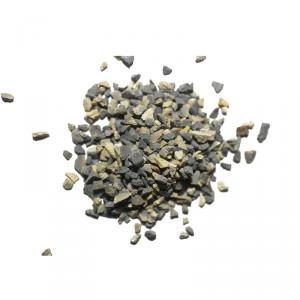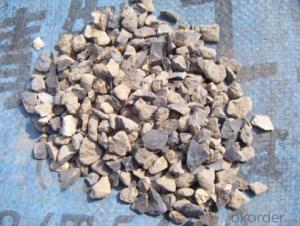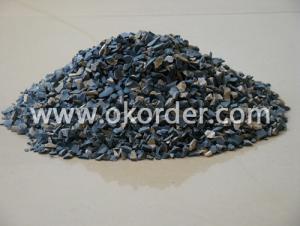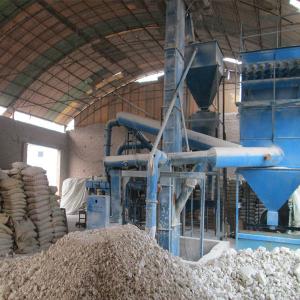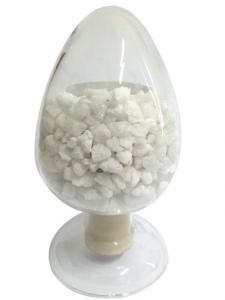Raw Materials for Refractory:Shaft Rotary Kiln Bauxite 83 Grade Clays
- Loading Port:
- Tianjin
- Payment Terms:
- TT or LC
- Min Order Qty:
- 20 m.t.
- Supply Capability:
- 1000 m.t./month
OKorder Service Pledge
OKorder Financial Service
You Might Also Like
Quick Details
· Place of Origin: Shaanxi, China
· Shape:particle or powder
· Material:Alumina
· SiO2 Content (%): 11max
· Al2O3 Content (%):83min
· Fe2O3Content (%):2.2max
· Model Number:Customer's Requirement
· Brand Name:CMAX
· Application:Metallurgy or Refractory
· Product name:Bauxite/Alumina fines/boksit/raw bauxite fire cement/200mesh bauxite powder
· Color:Black/gray
· Size:100MESH/200MESH/0-1MM/1-3MM/3-5MM/0-40MM
· BULK DENSITY:2.9G/CM3
· Certificate:ISO9001
· Usage:Fire Resistance Place
· Type:Raw Refractory
· shape:particle or powder or clinker
· Packaging Details:Bags/In bulk/As costomer's requirement'
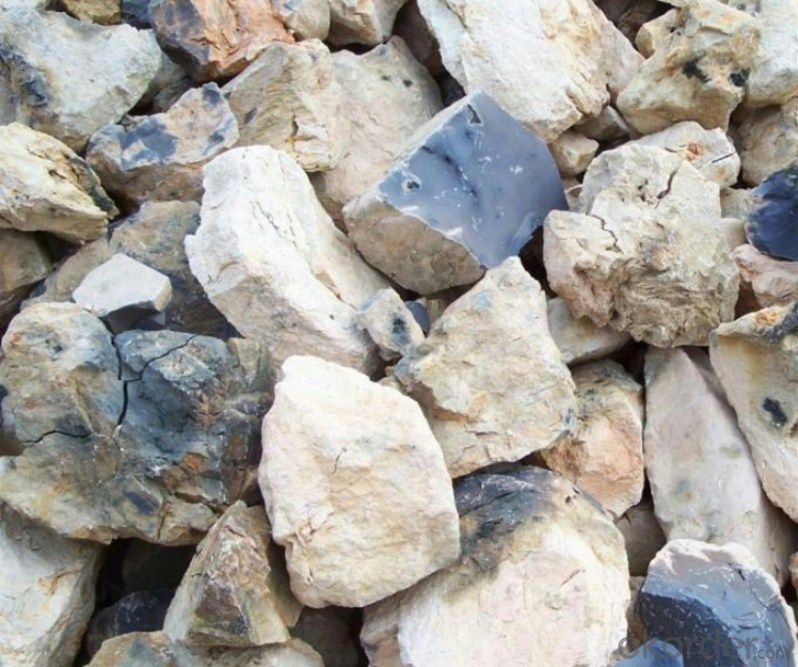

Quality assurance:
1.On a regular basis or as per your request,we entrust national testing agencies to conduct quality inspections
2. Strictly in accordance with the ISO9001-2008 international quality system standard,we monitor and manage the whole process throughout production,quality testing,and measurement to ensure product quality
FAQ:
Q: What kind of payments does your support?
A: T/T, L/C, Cash are accepted.
Q: Do you charge for the samples?
A: Accordeing to our company policy, the samples are free, we only charge the freight fee. And we will return the freight fee during the next order.
Q: Can you produce according to customers' design?
A: Sure, we are professional manufacturer.
Q: Do you have other products?
A: Yes, please check the pictures:
- Q: What is streaming fireproof material?
- Streaming fireproof material is castable refractory that can flow and degas without virbration, which is suitable for thin-wall or places that cannot be molded by vibration because of complex shapes. Well, appropriate amount of water is necessary for it. Its characteristic goes that it can be cast into various shapes of construction body without virbration and it will not reduce or not significantly reduce the performance of castable at the same time.
- Q: Can anyone tell me the requirements of the refractory masonry??
- Kaolin is mainly composed of kaolinite crowded minerals that is in the shpe of tiny flake which is less than two microns, tube and folding flake. The kaolinite crowded mineral consists of kaolinite, dickite, pearl stone, halloysite, etc. and its ideal chemical formula is AL2O3-2SiO2-2H2O. The main mineral component of it is kaolinite and halloysite.In addition to the kaolinite crowded mineral, kaolin is accompanied by other minerals like montmorillonite, illite, pyrophyllite, quartz and feldspar. The chemical composition of kaolin contains large amounts of AL2O3, SiO2, and a small amount of Fe2O3, TiO2, and traces of K2O, Na2O, CaO and MgO, etc. The white pottery is made of kaolin. At present, the internationally accepted scientific name for kaolin is Kaolin which is derived from the kaolin mountain in the eastern suburb of kaolin village in Jingdezhen.Such special properties of kaolin as its plasticity,cohesiveness, certain dry strength, sinterability and firing whiteness make it the main raw material for ceramic production; properties like whiteness, softness, high dispersibility, and adsorbability allows it to be widely used the paper industry. In addition, the kaolin is also widely used in some industrial sectors such as rubber, plastics, refractories, oil refining as well as agriculture sector and cutting-edge technology for national defense. According to the purpose and requirements, kaolin can be processed and purified and it can be used to manufacture activated clay.
- Q: I want to consult the fire resistant level standards of external wall thermal insulation materials.
- Fire resistant level standards of external wall thermal insulation materials: 1, The thermal insulation material that has A-class combustion performance: Spraying inorganic fiber, glass wool, foam glass, ceramic foam, rock wool, foam cement and perlite obturator, and so on. 2, The thermal insulation material that has B1 level combustion performance: Special processed extruded polystyrene board (XPS) / special processed polyurethane (PU), phenolic and polystyrene powder. 3, Thermal insulation materials that have level B2 combustion performance: Molded polystyrene board (EPS), extruded polystyrene board (XPS), polyurethane (PU), polyethylene (PE), etc.
- Q: How to hang the suspended brick in the refractory masonry?
- First you can fasten the girder and the suspended brick with screws, and then move them to the specified location by a crane. You can contact the refractory plant in Shanshan mountain, Ningxiang Countym, Hunan Province at 0731-7150098.
- Q: Who knows about the criteria of fireproof and thermal insulation materials?
- Seven levels are divided according to "The classification of combustion performance of building materials and products", namely, A1, A2, B, C, D, E, F. It mainly refers to the combustion performance of materials. You can check on this standard for the specific dividing evidence. There are detail charts which mainly describe that whether there is drip or not, the ignition time, continuous burning time and so on.
- Q: Who knows how many kinds of fireproof insulation materials are there in the market?
- The so-called A-level materials in fire insulation materials, namely, the WW non-combustible insulation materials, and the WW material s are A-level. Inorganic fireproof and thermal insulation materials can be used as wall insulation materials to replace red bricks, therefore, they, as thermal and cold insulation materials, can reduce the thickness of walls, and save energy, as well as expand applicable areas indirectly, decreased structure weight. They are very good.
- Q: What is the particle size of boron carbide for refractories?
- Ask, in the electric furnace magnesia carbon brick, boron carbide amount how many? Thank you The service temperature is around 1600.
- Q: What refractories can withstand high temperature above 2100 degrees?
- Well, what can you heat to 2100 degrees? ? The dryer? What you used are all substance of low-melting point, which cannot withstand even 1000 degrees. "Is the maximum temperature of refractory bricks 1500 degrees?" Do you mean refractoriness or operating temperature? Firstly, a dryer is impossible to reach 2100 degree. If it does, you might as well use high chrome brick for oxidizing atmosphere. You can use silicon?nitride brick for non-oxidizing atmosphere. But I guess it is enough for you to use clay brick, but the price differs a lot! ! !
- Q: What are the differences of ceramics and refractories? Is the ceramics belonging to refractories?
- The ceramics and refractories are different with the porcelain ceramic with high temperature of 1300℃ as household porcelain refractory. The porcelain refractory material of 1450℃ as the same as the aluminum oxide, kaolin, refractory clay and other raw materials demand the deployment ratio of the raw material the same as the temperature.
- Q: What's the commonly used refractory material for ladle?
- 1. According to the refractoriness, it can be classified as follows: common refractory: 1580℃ ~ 1770℃; high grade refractory: 1770℃ ~ 2000℃; superrefractory: 2000 ℃; 2. According to the shape and demension of the product, it can be classified as follows: standard form : 230mm×113mm ×65mm of no more than four measuring scale, (demension ratio) Max: Min
Send your message to us
Raw Materials for Refractory:Shaft Rotary Kiln Bauxite 83 Grade Clays
- Loading Port:
- Tianjin
- Payment Terms:
- TT or LC
- Min Order Qty:
- 20 m.t.
- Supply Capability:
- 1000 m.t./month
OKorder Service Pledge
OKorder Financial Service
Similar products
Hot products
Hot Searches
Related keywords














